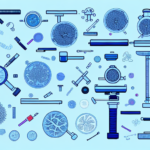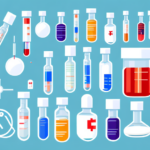Importance of Blood Sample Collection
Blood sample collection plays a pivotal role in modern medicine by enabling accurate diagnosis, effective treatment, and vital medical research. High-quality blood samples provide comprehensive information regarding a patient's health status, helping detect a range of conditions from infections and anemia to autoimmune disorders and cancers.
Diagnostic and Treatment Purposes
Blood tests are fundamental in diagnosing medical conditions. For instance, complete blood counts (CBC) can identify anemia or infections, while lipid panels assess cholesterol levels, and hemoglobin A1c tests monitor blood sugar levels in diabetic patients. According to the Centers for Disease Control and Prevention (CDC), blood tests are essential tools in managing chronic diseases and guiding treatment decisions.
Role in Medical Research
In medical research, blood samples are invaluable for studying disease mechanisms, developing new treatments, and conducting epidemiological studies. Researchers analyze blood biomarkers to understand disease progression and the effectiveness of therapeutic interventions, as highlighted by studies in the National Institutes of Health (NIH).
Ensuring Safety in Transfusions
Blood sample collection is critical in ensuring the safety of blood transfusions. Rigorous screening of donated blood for infectious diseases like HIV, hepatitis B and C, and syphilis is performed to prevent transmission to recipients. Additionally, determining a donor's blood type is essential for compatible transfusions and organ transplants, as detailed by the American Red Cross.
Types of Blood Samples
Understanding the various types of blood samples is essential for choosing the appropriate collection method and ensuring accurate test results.
Venous Blood
Venous blood is the most commonly collected type, drawn from a vein, typically in the arm. It is used for a wide range of diagnostic tests, including CBC, metabolic panels, and hormone levels.
Capillary Blood
Capillary blood is obtained from small blood vessels near the skin's surface, often via finger pricks or heel sticks in newborns. It is primarily used for glucose monitoring, coagulation tests, and certain screening tests.
Arterial Blood
Arterial blood, collected from arteries such as those in the wrist or groin, is used to measure blood gases, including oxygen and carbon dioxide levels. This is crucial in critical care settings, as indicated by the World Health Organization (WHO).
Specialized Samples
Specialized blood samples, such as those obtained from bone marrow biopsies, are used to diagnose and monitor specific blood disorders like leukemia and lymphoma. These procedures require advanced techniques and equipment to ensure sample accuracy.
Challenges in Blood Sample Collection
Blood sample collection presents various challenges that can impact the quality and reliability of test results. Addressing these challenges is essential for healthcare professionals to ensure successful sample collection.
Vein Accessibility
Individuals vary in vein visibility and accessibility. Patients with small or deep veins, such as children and the elderly, may pose difficulties in finding suitable veins for blood draws, necessitating skilled techniques and sometimes alternative collection sites.
Patient Discomfort and Compliance
Fear of needles and discomfort during blood draws can cause anxiety and compliance issues, potentially leading to inadequate sample collection or the need for multiple attempts. Implementing patient-centered approaches can mitigate these issues.
Risk of Infection
Maintaining sterile techniques during blood collection is paramount to prevent infections. A study published in the Journal of Clinical Microbiology emphasizes the importance of strict adherence to protocols to minimize infection risks.
Need for Specialized Training
Proper blood sample collection requires trained personnel proficient in various techniques. Continuous education and training are necessary to stay updated with best practices and technological advancements.
Best Practices in Blood Sample Collection
Adhering to best practices in blood sample collection ensures the integrity and reliability of test results, ultimately impacting patient care and medical research.
Essential Tools
The selection of appropriate tools, such as needles, tourniquets, antiseptic wipes, and collection tubes, is crucial. Using high-quality, sterile equipment reduces the risk of hemolysis and contamination, thereby enhancing sample viability.
- Needles of appropriate gauge size
- Tourniquets to facilitate vein visibility
- Antiseptic wipes for site cleaning
- Vacuum tubes with specific additives for different tests
Preparing the Patient
Effective patient preparation involves informing the patient about the procedure, assessing their medical history, ensuring hydration, and creating a calm environment to facilitate successful blood draws. Recommendations include fasting prior to certain tests to ensure accurate results.
Collection Techniques
Employing proper collection techniques, such as the evacuated tube system or syringe method, is essential. Precision in needle insertion, controlled blood flow, and proper handling during collection minimize sample degradation and ensure accurate results.
Handling and Transport
Post-collection, samples must be labeled accurately, stored at appropriate temperatures, and transported promptly to the laboratory. Using temperature-controlled transport containers and timely delivery prevents sample degradation and maintains integrity.
Maintaining Sample Integrity
Implementing quality control measures, such as regular equipment checks and adherence to protocols, maintains the integrity of blood samples. Proper storage conditions prevent hemolysis and ensure the reliability of test outcomes.
Avoiding Common Errors
Common errors like mislabeled tubes, underfilled samples, and hemolysis can be prevented through meticulous procedures and continuous staff training. Utilizing barcode labeling systems and standardized protocols enhances accuracy.
Technological Advancements and Future Trends
Technological innovations are revolutionizing blood sample collection by enhancing efficiency, safety, and patient comfort.
Innovative Technologies
Advanced devices like vacuum collection systems and ultrasound-guided venipuncture tools improve the precision of blood draws, especially in challenging cases. Real-time feedback mechanisms help in managing blood flow during collection.
Microsampling Techniques
Microsampling requires smaller blood volumes, making it ideal for frequent monitoring and use in vulnerable populations. Techniques like dried blood spot (DBS) sampling reduce discomfort and logistical complexities.
Automation and Robotics
Automation and robotic systems streamline the collection process, reduce human error, and increase throughput in clinical laboratories. These advancements expedite sample processing and improve overall efficiency.
Regulatory and Ethical Considerations
Compliance with regulatory standards and ethical practices is essential in blood sample collection to ensure patient safety and data integrity.
Regulatory Requirements
Adherence to regulations set by bodies like the U.S. Food and Drug Administration (FDA) and the European Medicines Agency (EMA) is mandatory. These regulations govern aspects such as sample handling, storage, and transportation to maintain quality standards.
Ethical Considerations in Diverse Populations
Collecting blood samples from diverse populations requires sensitivity to cultural beliefs and language barriers. Ethical considerations include obtaining informed consent and ensuring equitable treatment across different demographic groups.
Benefits and Impact of High-Quality Blood Samples
High-quality blood samples have profound implications for patient care, medical research, and public health.
Improved Diagnostic Accuracy
Reliable blood tests lead to accurate diagnoses, enabling timely and appropriate treatment interventions. This is critical in managing acute and chronic conditions effectively.
Enhanced Research Outcomes
In research, high-quality samples yield precise data, facilitating the development of new therapies and advancing scientific knowledge. Robust sample integrity is foundational to credible research findings.
Public Health Insights
Aggregated blood sample data across populations provide insights into disease prevalence, risk factors, and emerging health trends, informing public health policies and preventive strategies.
In conclusion, securing viable blood samples involves meticulous attention to collection techniques, handling procedures, and adherence to best practices and regulatory standards. Ongoing advancements in technology and methodology continue to enhance the process, ensuring that blood samples remain an invaluable resource in healthcare and research.




















